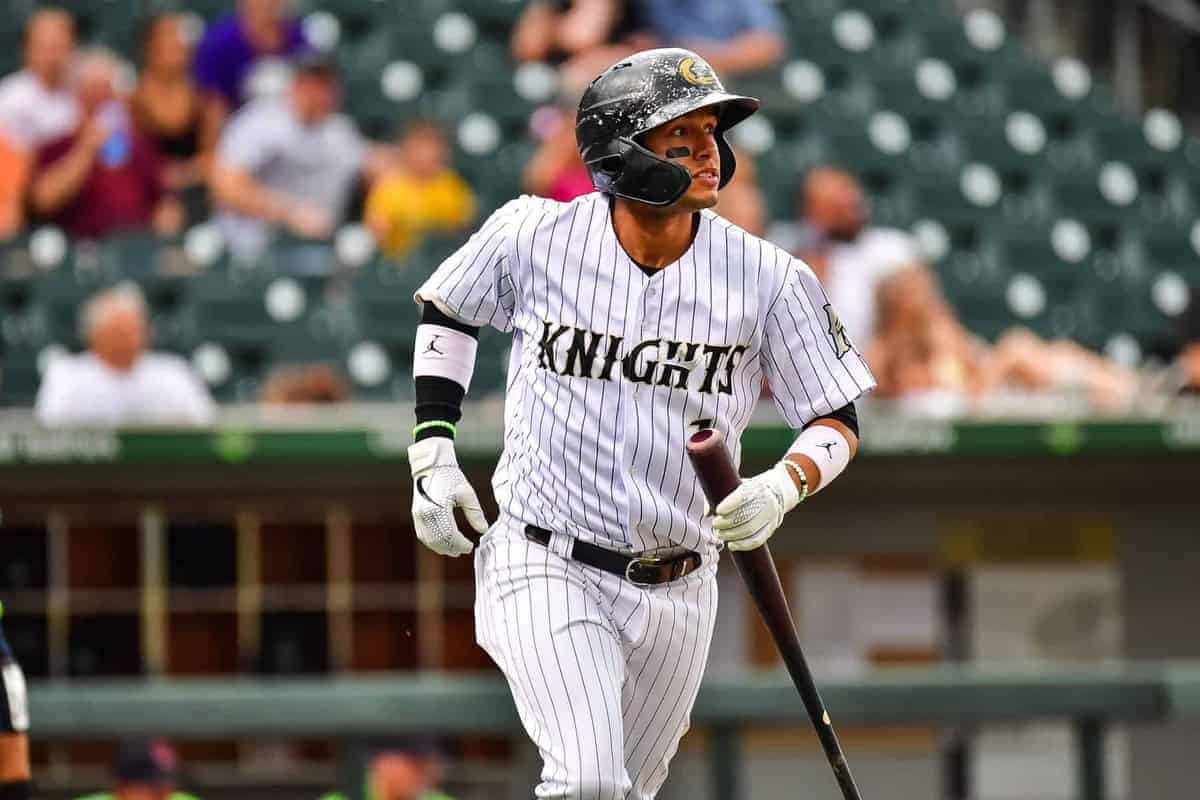Before he made his White Sox debut, my only defined memory of Ryan Goins wasn't a flattering one. He booted a routine grounder to second to open Mark Buehrle's final start back in 2015, and Buehrle ended up getting only two of the six outs he needed for a 15th consecutive 200-inning season.
Time will tell whether I'll remember the highlights from his White Sox debut as strongly, but Goins did what he could Wednesday night. He went 2-for-3 with a homer, and he helped Iván Nova retire the first batter of the game after the fact with a sweet pick and tag on a 5-3-6 double play.
Goins, a 31-year-old journeyman, wasn't the most exciting choice to replace Eloy Jiménez. That, of course, would've been Luis Robert. He also falls well short of the most novel choice for a 40-man roster spot. That would've been former 22nd-rounder Danny Mendick. Tom Fornelli made the case for Adam Engel to restore order to center field, which probably beats Goins for pure pragmatism.
But Goins does have a couple of unique selling points. Unlike Engel, Mendick, Alcides Escobar and just about everybody else at Charlotte, Goins hasn't built his Triple-A resume on home cooking:
- Total: .322/.406/.531 over 316 PA
- Home: .324/.420/.531 over 169 PA
- Away: .320/.390/.531 over 147 PA
And unlike those already mentioned, Goins is left-handed. Combine that with his ability cover three infield positions, and even if he's not your Triple-A position player of choice, he could do plenty to limit the chances of lesser players. Critique this roster move like jazz, because it's about who isn't being played. He's addition by subtraction by addition.
Goins poses a direct threat to Jose Rondón, whose last start ended with him throwing the ball into Oakland's never-ending foul territory. I still wouldn't be so quick to abandon Rondón. He improved his plate discipline (six walks, eight strikeouts) during an otherwise disastrous June (5-for-38, all singles), and that's reflected in a much better start to July (.364/.317/.636 over 12 PA). But both he and Yolmer Sánchez have labored against righties, so Goins is probably more a more formidable choice against them even if he's living in an 84-game mirage this year.
Goins also effectively gives Rick Renteria a left-handed outfielder, because his presence allows Leury García to return to center field. That's bad news for Charlie Tilson, whose last start opened with him knocking Jiménez out of the game with a collision in left center.
It creates a touch of drama in the weeks until Tim Anderson returns, because neither he nor Rondón have minor-league options. I don't want to overstate the tension, because there's nothing underneath Goins' Triple-A performance that screams swing change/breakout candidate (half his batted balls were grounders). If there's something more to his success this year, he's not sharing it:
“(I’ve had) good plate discipline (and have) been hitting the ball hard,” Goins said. “Trying to swing at the strikes and not swing at the balls. That’s kind of been the good result.”
“We kind of went back to some things I did before I got to the big leagues, like back in 2012-13, because he had seen me hit in Triple A before," Goins said. "Nothing crazy. Just honestly trying to go up there and have a good at-bat.”
For all we know one game in, Goins is following the path of other Charlotte expatriates like Tilson and Ryan Cordell. Both of those guys made a strong first impression this year before their flaws dragged them down. If I had to guess, the correct answer to "How should the White Sox make room for Anderson?" will be "Who cares?"
Still, by being left-handed and producing outside of BB&T Ballpark, Goins isn't the worst use of MLB at-bats at this point in time -- this point being a winless second half with a radioactive run differential. If he's the same guy he was before, he's different than the other guys currently handcuffing Renteria, and that's enough for now.





